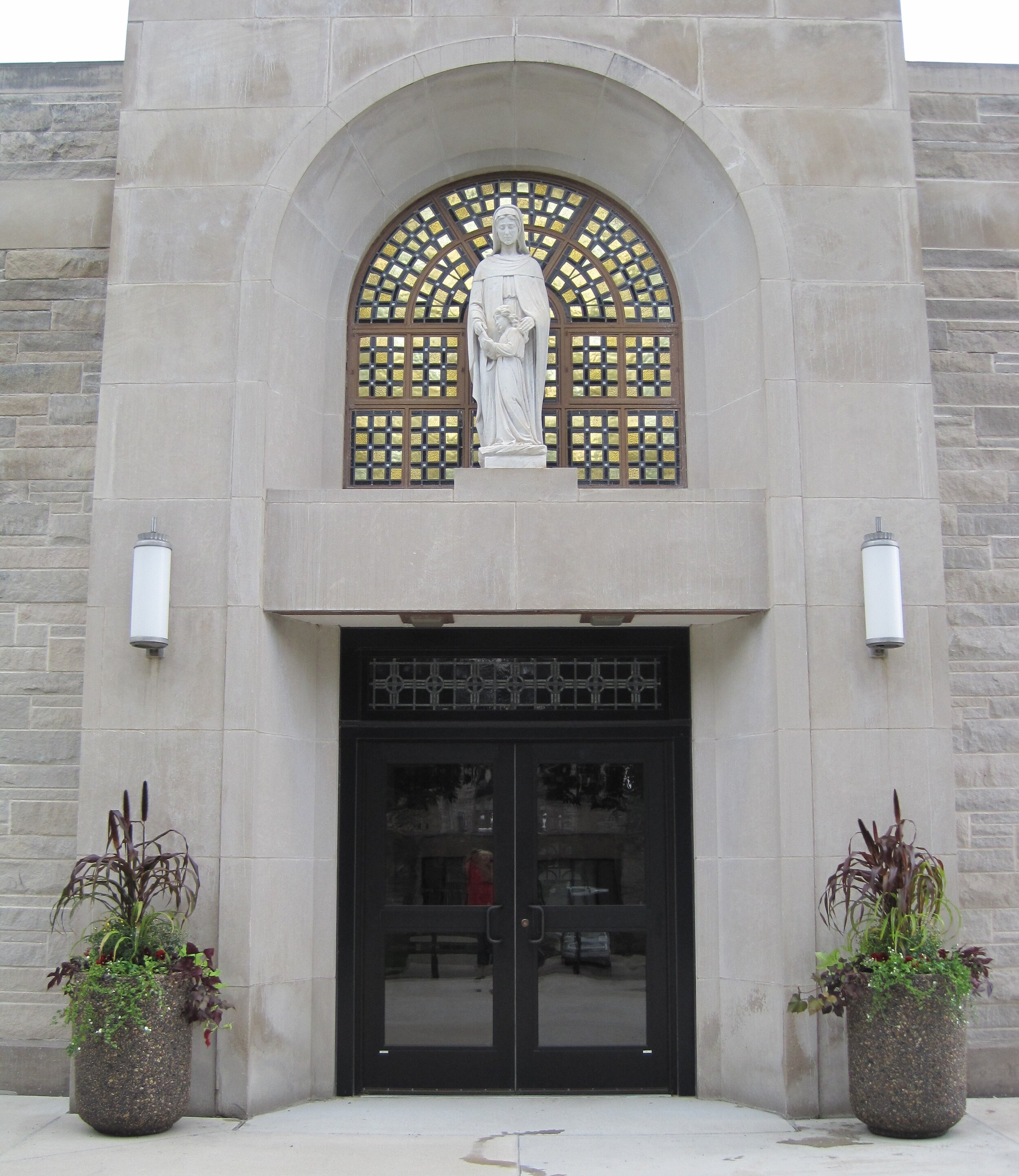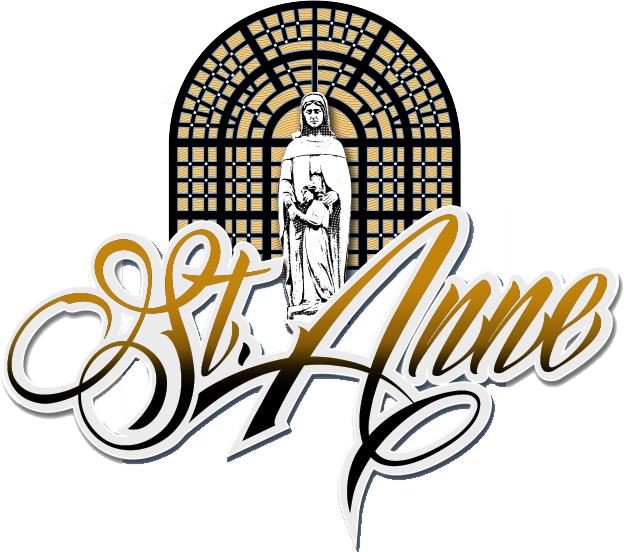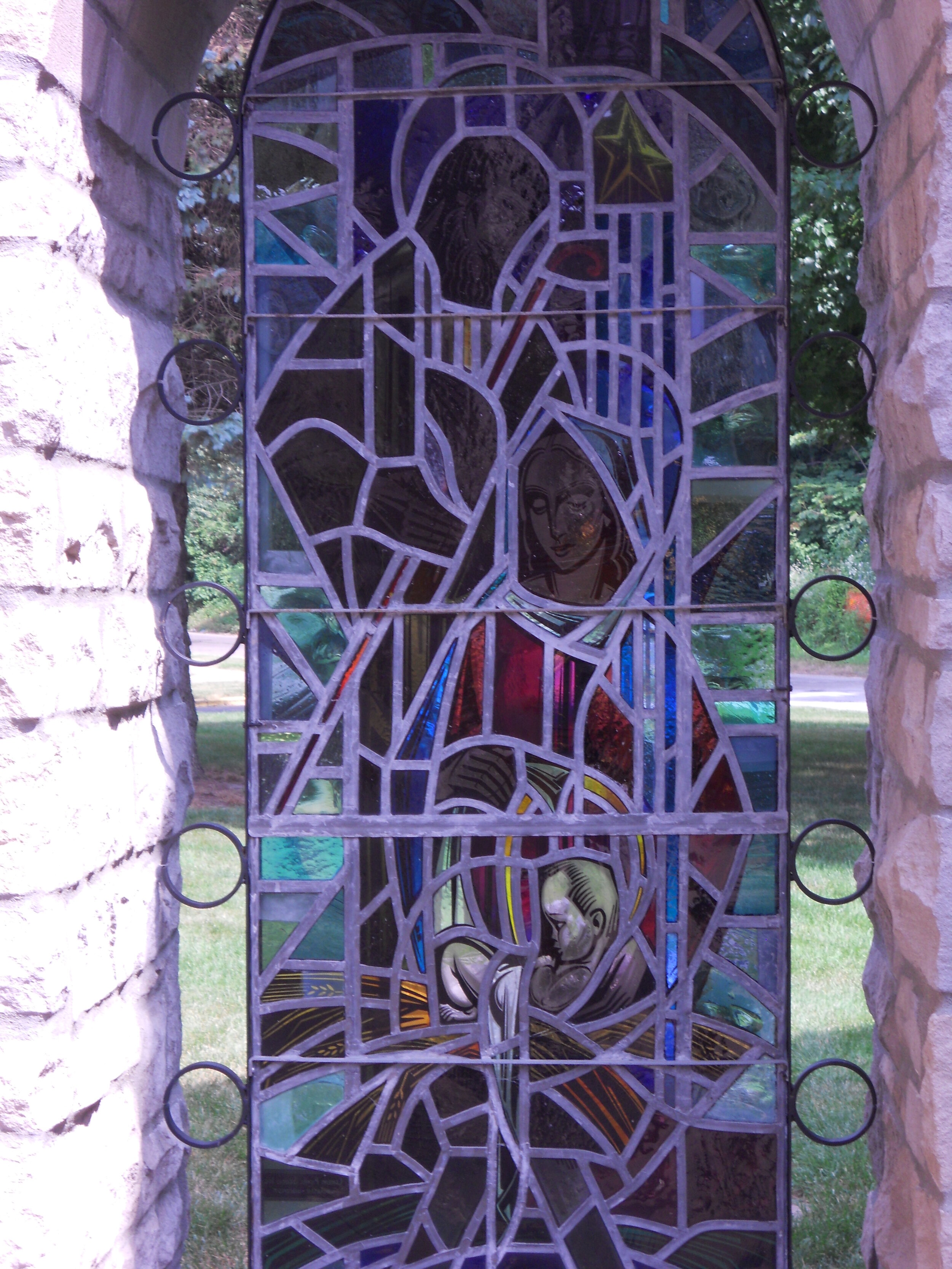stained glass windows
Nave Windows
The windows would be of antique glass made in Italy, Germany, Czechoslovakia and England.
The eight large windows in the nave of the church would be made of Genuine Imported Antique Glass, stained and leaded. Each window would have a different symbol representing in all of the eight windows the seasons of the church year. Beginning with the first window on the gospel side nearest to the altar and ending with the opposite window on the epistle side nearest to the altar, the symbols for the nave windows represent different parts of our faith.
Front Entrance Window
The window over the front entrance would be executed in an ornamental concept of design in a variation of shade in gold of Genuine Venetian blown gold glass. The window was designed and planned to attain striking decorated effect for the main entrance and also to create a shrine-like setting for the statue of St. Anne over the door.
Our thanks to Joe Roels for the above window information.
Holy Family Window
The Holy Family stained glass window was installed in 1954 and is located between the church and the rectory. Fr. Cleary was instrumental in getting this window installed and today it overlooks his grave site. The window was created by Conrad Pickel. In May 2009, the Garden Club had the window repaired and restored thanks to funds raised by parishioners. The window was removed on July 2, 2009 by John Watts of Glass Heritage in Davenport, Iowa, and returned to us on December 2, 2009.
Our thanks to Pat Liedtke for the above window information.
Self-Portrait
Conrad Lawrence Pickel
Born -10 February 1906 Died - 14 October 1994
Conrad Pickel is a world-renowned stained glass artist. Mr. Pickel’s life long passion for glass, color and light inspired him to create numerous imaginative works to honor life and the human spirit. Throughout his life Mr. Pickel was featured in many magazines and newspapers for his imagination and creativity in stained glass design.
The Conrad Pickel Studio was founded in 1947 in Milwaukee, WI, by sculptor, painter and stained glass artist Conrad Pickel (1906-1994). Born in Germany, Pickel grew up in Munich, where he studied at the Art Academy and learned the art of stained glass as a young apprentice in the Franz Mayer Studio. He came to the United States in 1927. During the next twenty years Pickel worked for various studios: Von Gerichten Studio in Columbus, Ohio; Judson Studios in Los Angeles; Connick Studio in Boston; and Conrad Schmitt Studio in Milwaukee. The 1930s included a brief studio partnership with Edward
Hiemer and Edward's father George. The same period also saw Pickel's marriage to Joan Friedlemaier, daughter of his co-worker Karl Friedlemaier, a glass-painter. Their marriage produced two children, Emma and Paul.
Pickel's studio, located at first in his Milwaukee home, was soon moved to larger quarters in nearby Waukesha and eventually into a three-floor building he built at New Berlin, WI,
for his rapidly growing business. In 1956 he opened a branch studio at Vero Beach, FL, to which the entire studio operation relocated in 1977. The Pickels also moved to Florida, where they built a home, first at Pompano and then at Boynton Beach. Conrad's son Paul Pickel, a past president of the Stained Glass Association of America, now oversees the
Pickel Studio at Vero Beach. A West Coast branch office of the studio was opened in San Diego, CA in 2000.
Removal of the Holy Family window for repair
Return of our window by Glass Heritage
Window repaired and straightened. Grotto wall has been cleaned and new tuck pointing complete.
The Holy Family Window
Nave Window: Advent
Nave Window: Christmas
Nave Window: Epiphany
Nave Window: Lent
Nave Window: Easter
Nave Window: Pentecost
Nave Window: Assumption of Mary
Nave Window: All Saints

Front Window: Exterior View

Front Window: Exterior View, Close-Up

Front Window: Interior View












